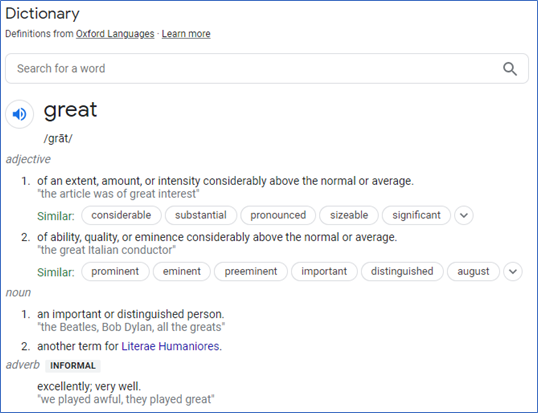Understanding the “Quiet Quitting” Trend
This article is from RISQ Consulting’s Zywave client portal, a resource available to all RISQ Consulting clients. Please contact your Benefits Consultant or Account Executive for more information or for help setting up your own login.
“Quiet quitting” is an emerging trend where workers only do what their job description entails without going above and beyond. Over the course of the COVID-19 pandemic, many employees shifted their views on their work lives, and this has been reflected in movements such as the Great Reshuffle—a mass movement of workers to jobs that meet their demands for things such as more flexibility and better benefits—the shift to remote work and, now, the quiet quitting trend.
Employees who solely complete their job description and no more could continue to be valuable workers. However, employers can consider steps to engage employees and prevent quiet quitting from happening in the first place. To help eliminate the trend’s presence in their organizations, employers should focus on effective communication with their employees and methods to enhance employee engagement.
Signs of Quiet Quitting
Research conducted by Gallup found that only 32% of employees are engaged, and 17% are actively disengaged. Employees who are not engaged could be at risk for doing only their job and not going above and beyond. Further, 53% of workers reported they feel burnt out, according to Talkspace’s Employee Stress Check 2022 Report. To improve employee engagement and prevent these issues from turning from quiet quitting into actual quitting, employers need to know what signs to look for. Employers should pay attention to employees who are consistently doing the following:
- Not attending meetings that are not mandatory
- Not being as productive as they once were
- Contributing to team projects less
- Not participating in meetings
- Displaying a lack of enthusiasm
It is important to know that there a several reasons an employee may choose to quiet quit. For example, they may simply refuse to do work outside their job description because they feel they are not being compensated for it. While it may not be clear why an employee is choosing to quiet quit, these signs are a good indicator that an employee may be thinking about it or trying to do so.
What Employers Can Do
Quiet quitting is often the result of decreased motivation and burnout. Further, a lack of effective communication between leaders and employees and a general failure of management and organizations can play a role. For example, failures may include a lack of honesty with employees and not delivering on promises. Consider the following ideas to help improve employee engagement and decrease the odds of quiet quitting among employees:
- Provide clear job descriptions. Job descriptions let employees know exactly what is expected of them. Employers should review job descriptions to ensure they accurately reflect the duties they expect their employees to perform.
- Conduct performance reviews. Performance reviews are opportunities to reward employees for the positive things they have done and inspire them to continue working hard. Without this feedback and indications of appreciation for hard work, such as title adjustments and salary raises, employees could lack motivation and start to feel burnt out and consider quiet quitting. Further, it is important to recognize employees who go above and beyond because they are likely to feel discouraged and decrease their performance if their contributions go unnoticed. Conversely, performance reviews are just as important for underperforming employees because they are opportunities to clearly communicate expectations and work together to correct the behavior.
- Educate employees on employee handbooks. Employee handbooks are another tool employers can use to clearly communicate expectations to employees, but they are only truly effective if employees understand them. Employers should take time to educate employees on their handbook and its policies so they can ensure employee understanding. The handbook should be reviewed and updated regularly to ensure that expectations are up to date and that organizations are in compliance with current laws.
- Provide learning and development opportunities. High employee engagement is crucial to preventing quiet quitting. One effective way to increase engagement is through learning and development initiatives. According to Zywave’s 2022 Attraction and Retention Benchmarking Overview, 29% of employers found career development opportunities to be a top priority of workers during the hiring process. Employees who have these opportunities are more likely to remain engaged and stay motivated to try their best at their jobs.
- Focus on good management strategies. Effective management is essential to having efficient, happy employees, so it is important to focus on the techniques managers use. Provide resources to managers about effective strategies and meet with them to discuss ways they can improve. Further, consider conducting skip reviews, where employees talk with their manager’s manager to discuss feedback or concerns they may have. This will allow the manager to receive helpful feedback that can be mutually beneficial and improve their employees’ experiences.
Takeaway
Quiet quitting is the new term for the trend of employees doing only what their job requires without exceeding expectations. Employers should be aware of the trend and that it will impact every workplace differently. Employers should monitor for signs that employees may be disengaging and utilize different strategies to help prevent quiet quitting. In cases where quiet quitting may be negatively impacting the employer and they cannot seem to resolve the issue, employers should ensure compliance with federal and local employment laws before pursuing any termination action. For specific guidance about disciplining employees, employers are encouraged to seek local legal counsel.
Contact RISQ Consulting today for more information on workplace trends, employee retention and employment laws.
- Published in Blog
Employee Quits Continue Downward Trend in May From All-time High
This article is from RISQ Consulting’s Zywave client portal, a resource available to all RISQ Consulting clients. Please contact your Benefits Consultant or Account Executive for more information or for help setting up your own login.
The U.S. Bureau of Labor Statistics (BLS) recently released its May Job Openings and Labor Turnover Summary. The number of employee quits continued to fall for the second month in a row; May’s reported number of employee quits fell to around 4.3 million, down from 4.4 million in April and from a record high of 4.5 million in March.
The BLS defines “employee quits” as a “voluntary separation initiated by the employee.” “Employee quits” is used as a measure of workers’ willingness or ability to leave jobs. May marks the 12th consecutive month that more than 4 million workers left their jobs.
Despite the decrease in total employee quits, May’s report reveals that the rate of quits changed very little, dropping slightly from 2.9% in April to 2.8% in May. The arts, entertainment and recreation industry saw a slight increase in employee quits.
In addition to the continued high number of employee quits, the number of total job openings fell slightly from 11.4 million on the last day of April to 11.3 million at the end of May. Job openings outnumbered unemployed workers by approximately 5.3 million. The most significant decreases in job openings were in professional business services, durable goods manufacturing and nondurable goods manufacturing.
Other key takeaways from May’s report include an unchanged hire rate despite the slight decrease in job openings. Additionally, although the number of layoffs and discharges dropped slightly to 1.4 million, the discharge rate was unchanged at 0.9%.
May’s report indicates that employee mobility remains strong as employees continue to leave their jobs voluntarily in very large numbers. Consistent with prior months, May’s report indicates that employees are not leaving the workforce entirely but finding new employment.
Employer Takeaway
Even though employee quits have continued to trend down, the number of job openings appear to have stabilized at more than twice as high as pre-pandemic levels. As a result, the demand for workers remains high, and employers continue to struggle retaining employees.
May’s report suggests that workers still feel confident enough to switch jobs for better pay or working conditions due to the high number of job openings. Employers have been forced to respond by raising wages and offering competitive benefits to attract talent.
The sustained trend of high numbers of employee quits and job openings likely point to continued talent challenges for employers. As such, employers should continue to monitor employment trends to stay informed on the evolving market.
Contact RISQ Consulting for more resources.
- Published in Blog
I’m Great, How Are You?
By Bailey Penrose, Employer Services Account Manager
We live in a tongue-in-cheek era. Public officials engaging in sly humor during press conferences, memes highlighting current events, comic strips poking at both politicians and policies, irreverent bumper stickers about social issues… the list goes on. It seems like a point is better made with a punch line. I don’t mind this as it makes me chuckle quite frequently. However, the one-two punch of the ambiguous definition of the word ‘Great’ I would be happy to leave behind.

I would love to a have a great day! A great event of much import makes me want to hyperventilate into a paper bag.
We’ve all had a rough couple of years, and to cap it off we’re now dealing with another ‘Great’. The ‘Great Recession’, as it’s become known, is a reality for many right now and may stick around as we see how the shifting employment landscape settles.
Adria Horn, executive vice president of workforce at Tilson, and an army veteran who has served five tours of duty overseas, has a compelling theory about why we’re seeing this employee mass migration. She explores her theory, and the potential outcomes of this most recent ‘Great’, in a thought-provoking article over at McKinsey & Company.
- Published in Blog




